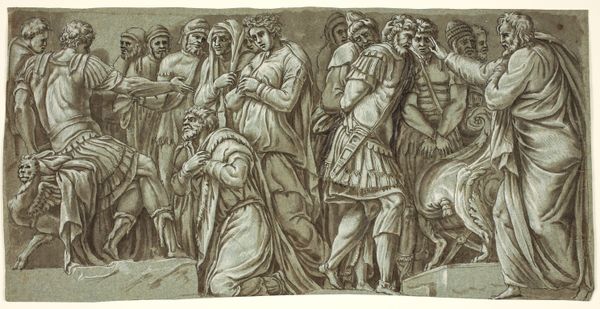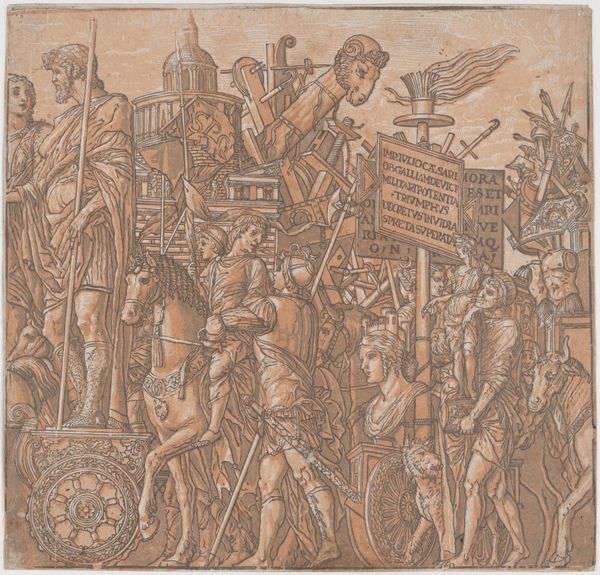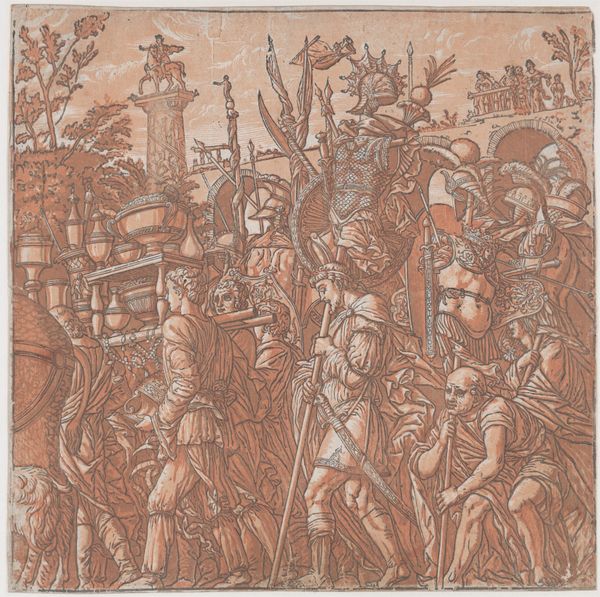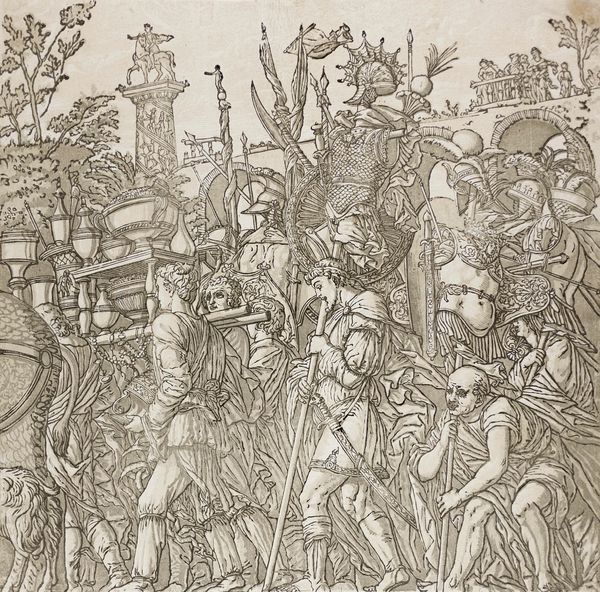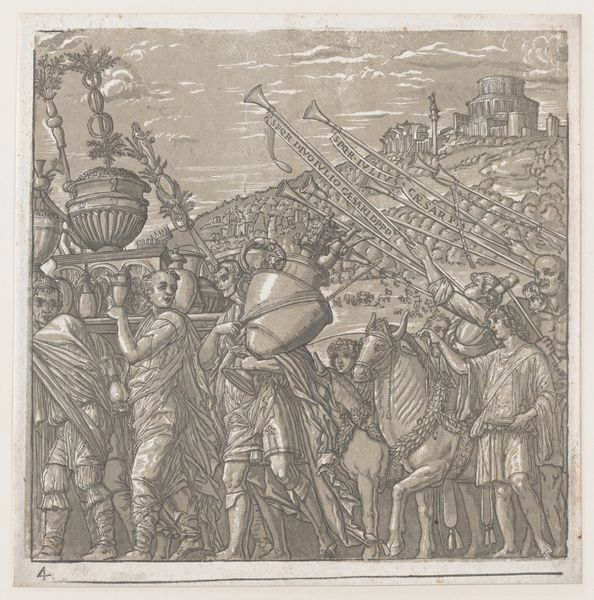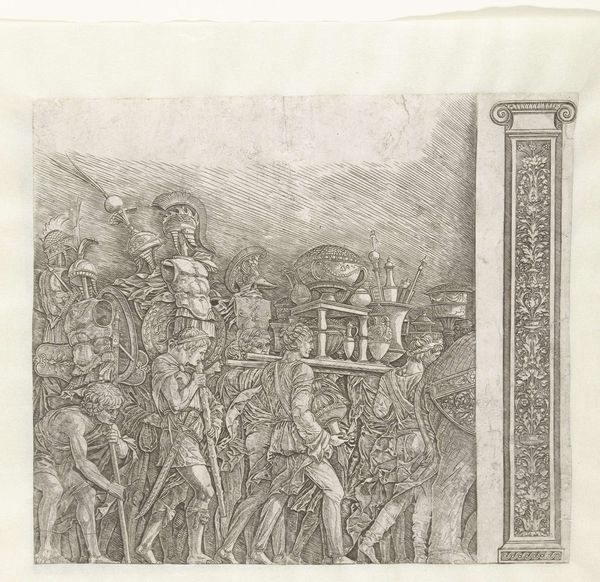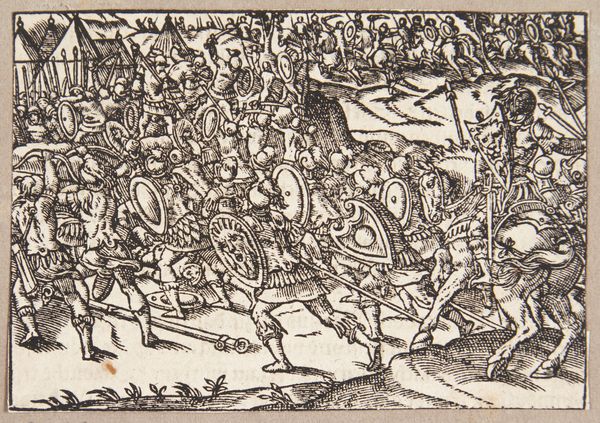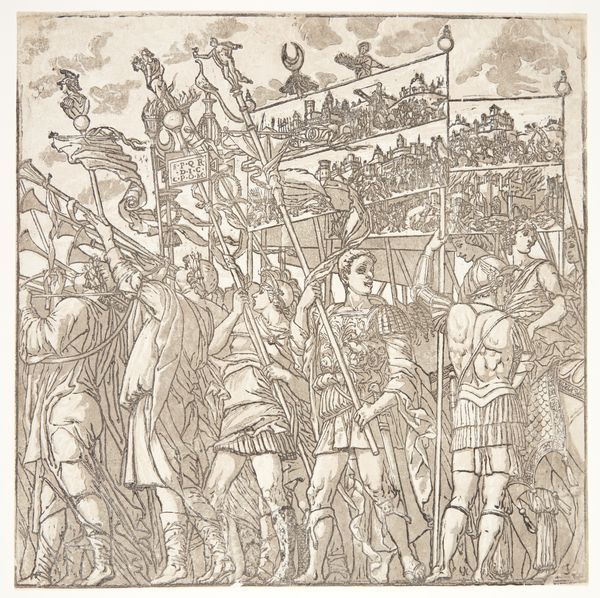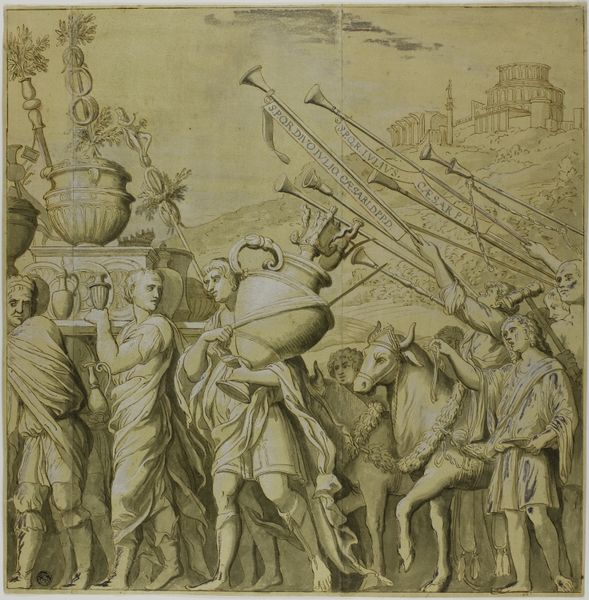
Mucius Scaevola Murders Porsenna's Secretary and Puts His Right Hand in the Fire c. 1480
0:00
0:00
carving, tempera, relief, wood
#
carving
#
narrative-art
#
tempera
#
relief
#
figuration
#
11_renaissance
#
oil painting
#
12_15th-century
#
wood
#
genre-painting
#
history-painting
#
italian-renaissance
Dimensions: 67.4 x 152.5 x 0.9 cm
Copyright: Public Domain
Curator: Looking at this relief, I'm struck by how the composition guides your eye. There’s a distinct recession into space. It feels almost like looking into a stage set. Editor: The color palette is unexpectedly subdued; the warm gold highlights carved in this work offer glimpses of pageantry, the glimmering vestige of valorous episodes in human history. Tell me, what narrative threads are woven into this intricate scene? Curator: This is an Italian Renaissance panel dating back to around 1480, showing "Mucius Scaevola Murders Porsenna's Secretary and Puts His Right Hand in the Fire." Editor: Fire…it's quite symbolic here, not just a literal act, but as a statement against authority. I see themes of defiance, courage, and patriotism encoded within. But the work itself, even without knowing that, there’s an immediate tension between power and submission here, the use of line is stark, yet unified across a complex landscape that recedes deep in space. The architecture gives a glimpse into how city walls worked at this time. Curator: Precisely. The event itself speaks of the Roman values during that era, their understanding of sacrifice. Scaevola, having failed in his attempt to assassinate King Porsenna, willingly burns his own hand as a display of Roman courage and as an illustration that physical torture cannot break the moral convictions of true patriotism. The burning hand would resonate strongly; such images cemented values and collective identity. Editor: A visual assertion of unshakeable Roman identity—yes. It works, not only conceptually, but in terms of pure visual design as well. Even now, centuries later, the scene’s geometric framework lends a forceful dynamic of resolution, I would say—but what's most captivating is the artist's focus. Every contour leads me to ask more about what motivated him to share this. Curator: Perhaps it reflects a time of political instability— a message about resilience, or defiance. Considering its survival, the woodcut served its purpose across generations. Its ability to evoke moral strength makes the work relevant even in the twenty-first century. Editor: I’m still contemplating how form supports this theme of resistance—the narrative becomes encoded in the geometric interplay, in the interplay of the deep browns offset by gilding and texture. So evocative!
Comments
Join the conversation
Join millions of artists and users on Artera today and experience the ultimate creative platform.

